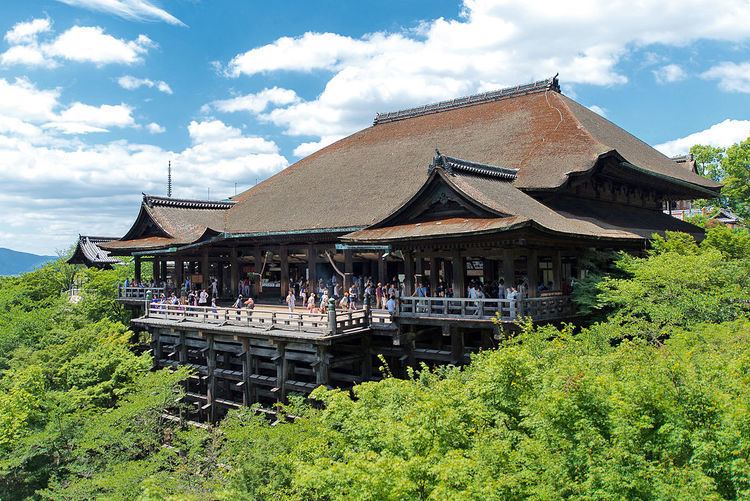Affiliation Kita-Hossō Completed 778 Phone +81 75-551-1234 | Opened 778 AD | |
 | ||
Deity Senju-Kannon (Sahasrabhuja Ārya Avalokitezvara) Address 294 Kiyomizu 1-chome, Higashiyama Ward, Kyoto, Kyoto Prefecture 605-0862, Japan Similar Kinkaku‑ji, Arashiyama, Ginkaku‑ji, Nijō Castle, Gion | ||
Kiyomizu dera temple kyoto city
Kiyomizu-dera (清水寺), officially Otowa-san Kiyomizu-dera (音羽山清水寺), is an independent Buddhist temple in eastern Kyoto. The temple is part of the Historic Monuments of Ancient Kyoto (Kyoto, Uji and Otsu Cities) UNESCO World Heritage site. It was one of 20 finalists for the New7Wonders of the World.
Contents
- Kiyomizu dera temple kyoto city
- Kiyomizu dera temple and gardens kyoto japan travel video
- History
- Present
- References
The place is not to be confused with Kiyomizu-dera in Yasugi, Shimane, which is part of the 33-temple route of the Chūgoku 33 Kannon Pilgrimage through western Japan, or the Kiyozumi-dera temple associated with the Buddhist priest Nichiren.
Kiyomizu dera temple and gardens kyoto japan travel video
History
Kiyomizu-dera was founded in the early Heian period. The temple was founded in 778 by Sakanoue no Tamuramaro, and its present buildings were constructed in 1633, ordered by the Tokugawa Iemitsu. There is not a single nail used in the entire structure. It takes its name from the waterfall within the complex, which runs off the nearby hills. Kiyomizu means clear water, or pure water.
It was originally affiliated with the old and influential Hossō sect dating from Nara times. However, in 1965 it severed that affiliation, and its present custodians call themselves members of the "Kitahossō" sect.
Present
The main hall has a large veranda, supported by tall pillars, that juts out over the hillside and offers impressive views of the city. Large verandas and main halls were constructed at many popular sites during the Edo period to accommodate large numbers of pilgrims.
The popular expression "to jump off the stage at Kiyomizu" is the Japanese equivalent of the English expression "to take the plunge". This refers to an Edo period tradition that held that, if one were to survive a 13m jump from the stage, one's wish would be granted. 234 jumps were recorded in the Edo period and, of those, 85.4% survived. The practice is now prohibited.
Beneath the main hall is the Otowa waterfall, where three channels of water fall into a pond. Visitors can catch and drink the water, which is believed to have wish-granting powers.
The temple complex includes several other shrines, among them the Jishu Shrine, dedicated to Ōkuninushi, a god of love and "good matches". Jishu Shrine possesses a pair of "love stones" placed 18 meters apart, which lonely visitors can try to walk between with their eyes closed. Success in reaching the other stone with their eyes closed implies that the pilgrim will find love, or true love. One can be assisted in the crossing, but this is taken to mean that a go-between will be needed. The person's romantic interest can assist them as well.
The complex also offers various talismans, incense, and omikuji (paper fortunes). The site is particularly popular during festivals (especially at New Year's and during obon in the summer) when additional booths fill the grounds selling traditional holiday foodstuffs and souvenirs to throngs of visitors.
In 2007, Kiyomizu-dera was one of 21 finalists for the New Seven Wonders of the World. However, it was not picked as one of the seven winning sites.
